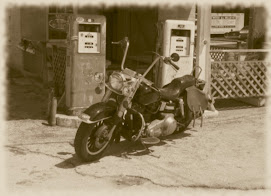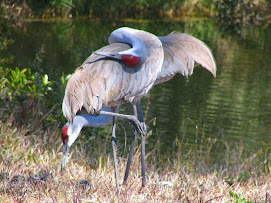
Some of these Snow-Birds aren't human, they are the Northern Atlantic Right Whales. They spend their summers in the Bay Of Fundy then in October pregnant females and some juvenile female & males begin their long migration to Florida. We sometimes begin hearing of sightings in Georgia around the beginning of December and start to see one or two whales here in Flagler County, FL in January. In March they begin to go back home just like the Snow-Birds, except the whales who came to give birth have their newborn calves in tow, unlike the Snow-Birds.
A little Northern Atlantic Right Whale background:
The Northern Right Whale got its name around the 1800s by being the "right whale" to hunt because they "move slow (about 15 mph), stay close to the shoreline and float when they die" Therefore they were over hunted...
Their recovery rate is slow, they are still in danger of ship strikes and fishing nets.
They are slow in reproducing, some years only 5 calves were reported to have been born.
There is now what is called an "EARLY WARNING SYSTEM" in place that involves several agencies, independent and government run. This system is in place in Florida, Georgia and Massachusetts. Ships at 300 tons or more have to report in when they enter the whale's habitat.
In Florida, the US Navy sends out an automated message to all ships in the area with locations of the whales if they are the area and how to avoid them.
Becoming entangled in fishing nets is a huge hazard. One Northern Atlantic Right Whale, "Kingfisher" was horribly tangled 3 years ago when he was here. Rescue attempts were made to untangle him, but failed. He came back 2 years ago, not as tangled but still in danger, once again they tried to get the ropes off him. You can read the story here.
This article is the most recent I could find. I keep hoping he gets spotted again, he is a local celebrity. We all want to know how he is doing.
I had never heard of this species of whale until February of 2004 when one was spotted in the ocean out of our window at our Century 21 Sundance "Beachside"office in Ormond By The Sea.
She wasn't breaching or showing off. She would surface every 15 minutes or so, take a breath and go below the surface again.If you were looking in the right place in the ocean you could tell she was coming up for air before you actually saw her.
A phone call was made to the wife of one our agents, 30 minutes later a gentleman comes in and introduced himself as Frank Gromling with the Marineland Right Whale Project. He tells us we are watching a Northern Atlantic Right Whale and he thinks she is birthing a calf judging from her behavior.
He then tells us this whale is endangered (this species has been protected since 1935); there are only about 350 in the world!
I felt very special this day. I got to see 1 out of 350 existing animals in the Atlantic Ocean. Think about the odds folks.
She was within our sight of our office 4 hours that day. We don't know for sure if she gave birth. Before Frank left he gave me the 800# for the Marineland Right Whale Project along with his cell #, "Call me if you see any more whales." I did see two other whales, not Right Whales, I did call him though.
The following season I got a call from my Broker/Manager who was driving south on A1A towards the office. She told me to get in my car and head north, there are at least 8 whales about 3 miles away from our office, bring my camera! I did bring the camera, but I had a Kodak Easy Share with very little zoom power, my photos didn't show a lot, just what looks like logs in the water with a occasional tail slap from far away. The next day the Daytona News-Journal had a photo of a whale from the same SAG (Surface Air Group) and it was incredible. I decided I needed a better camera for next year.
Valentines Day of 2006 was a treat! (and my new camera was ready) We had a mother and calf stop by the office for a couple hours. I called Frank who was out of town, he in turn called Jim Hain, a scientist from Woods Hole, MA (Jim comes down to Florida to spot and record Right Whale information). Jim called me back and told me a plane was on the way and he would be at my office shortly, could he have the address? (A plane? Frank knew by now I knew my whales, they sent a plane up on my word alone!) He also told me there was another mother/calf duo in the area, how exciting! Two babies! We watched this pair for 2 hours, the baby played near its mom, occasionally waving to us.


I called Jim, told him to hurry, we have a whale that is putting on an incredible show! I was told this was probably a juvenile male. He also stuck around about 2 hours then headed to Daytona Beach. The Daytona News Journal caught up to him at 3PM and he was still showing off!


 I began getting email updates from Marineland after the 2006 season was over, I believe 5 calves were spotted during the 2006 season.
I began getting email updates from Marineland after the 2006 season was over, I believe 5 calves were spotted during the 2006 season.My 2007 season was quiet, but for the spotters it was quite eventful. I now work away from the ocean, with a promise if there is a whale sighting I would get a call so I could come see it. The Beachside Office also promised me they would call the sighting in to Marineland.
I was out at the Beachside office one day so I decided to go north on A1A and see if I could find my Spotting Friends. Sure enough I found them, and Jim was also there. They were watching a female about a mile out with some very strong binoculars. I got to see my whale for the year, I was a happy girl!
Joy Hampp, Project Coordinator for The Marineland Right Whale Project, sends out updated emails throughout the season and a recap at the end. I received the recap the other day and asked her permission to quote from the email for my blog:
"FINAL COUNTS IN THE SOUTHEAST
The current count on number of mother/calf pairs this season is 20. The South Carolina aerial survey team spotted the 19th Mother/Calf pair at the end of the season and the North Carolina team photographed calf no. 20 on 21 April with a female that had not been seen in Southeast US waters before this and has not been matched to the right whale catalog. She could be a new addition.
Of the 20 mothers, 8 or 9 gave birth to their first calf. The average calving interval for this season is 3.6 years.
The total number of whales seen in the SE US is believed to be 112, including the calves, and some 72 other individuals, although this number may change once matches to the catalog are complete."
"RESULTS OF THE MARINELAND RIGHT WHALE PROJECT
In the nine weeks of survey, volunteers logged 1,683 hours of survey. This year, we calculated the number of volunteer hours, since most surveys have more than one volunteer participating. That total is 4,480.
We had 34 confirmed right whale sightings, 18 mother/calf, 7 singles, 6 pairs, and 3 SAGS. In 81% of the sightings, we successfully photographed the whales for identification. Once again, mid-February was our peak in number of sightings for the week. We saw 5 different mothers, including the first sighting of BK23 with a calf.
Our new AirCam logged 50 hours in 16 flights, flying about 3,000 total miles. The airplane responded to 8 sightings reported by volunteers and captured 2 unique sightings, one right whale and one humpback, all later in the afternoon and beyond the effective sighting range of shore spotters.
Special Spotters See Cetaceans Successfully!
In a cross-calibration analysis between the airplane and the shore spotters, we have learned that it appears that the shore spotters see 100% of the whales that are present within the effective sighting range -- when the airplane flew, it did not detect any whales that had not been already reported. And on days when the shore spotters had no sightings -- neither did the airplane. What this means is that the volunteer sighting network (and all of you) are very effective! This is good news, and congratulations!
In addition, shore spotters accomplished these sightings in a less-than-ideal-weather season. We seemed to have had more windy days and more days where winds came from the east, tending to generate more whitecaps. We also recorded our longest follows in all 7 seasons this year, with 2 follows lasting longer than 9 hours each."
A "follow" is when Jim & Joy follow the whale until the whale goes out to sea, or the sun goes down. They will either drive along the beach or use their plane to follow the whales.A big thanks to Joy Hampp, Jim Hain and Frank Gromling along with all the volunteers involved with this wonderful project. It has been a wonderful educational experience for me and I hope for all who reads this!
More Recent Posts:
Have Arpeggio And Her Baby Returned?
Proud Mom Arpreggio, And Her Calf Still Cruising Florida's Coast Line!
North Atlantic Right Whale's Are On The Move In Florida 12/27/2007
Links:
Franks Whales by Frank Gromling
Northern Right Whales in Florida With quotes from both Jim and Frank
The Marineland Right Whale Project
Whalenet







1 comment:
Originally posted Nov. 9th, 2007 with the following comments:
Collapse comments
Sarah Cooper said...
I know these pictures!! I'll have to show Tall One. :o)
My Dad is wanting to turn into a snowbird. He spent the morning scouring over pictures of houses in The Villages, drooling.
November 9, 2007 1:00 PM
Post a Comment